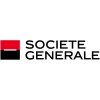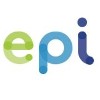Filter interviews by
NTT Security Interview Questions and Answers
NTT Security Interview Experiences
1 interview found
I applied via Naukri.com and was interviewed before Jan 2021. There were 3 interview rounds.
Interview Questionnaire
1 Question
- Q1. Cyber security attacks, port number and basic of network troubleshooting.
Interview Preparation Tips
Top trending discussions






Interview questions from similar companies

I applied via Campus Placement and was interviewed in May 2021. There were 4 interview rounds.
Interview Questionnaire
1 Question
- Q1. Data srructures
Interview Preparation Tips

I applied via Recruitment Consultant and was interviewed before Sep 2020. There were 3 interview rounds.
Interview Questionnaire
1 Question
- Q1. Competely on Ibm api connect development
Interview Preparation Tips

I applied via Walk-in and was interviewed before Oct 2020. There was 1 interview round.
Interview Questionnaire
1 Question
- Q1. C# related questions were asked
Interview Preparation Tips

I applied via Naukri.com and was interviewed in Feb 2021. There were 3 interview rounds.
Interview Questionnaire
1 Question
- Q1. All Technical quetions
Interview Preparation Tips

I applied via Naukri.com and was interviewed before May 2021. There were 3 interview rounds.
(1 Question)
- Q1. Java Collection, OOPS, Seralization
(1 Question)
- Q1. Java OOPS, Collection, threading, SQL
(1 Question)
- Q1. Nothing specific, Salary Negotiations.
Interview Preparation Tips

Interview Questionnaire
2 Questions
- Q1. Difference between++I and I++
- Ans.
++I is a pre-increment operator that increments the value of I before using it, while I++ is a post-increment operator that increments the value of I after using it.
++I increments the value of I and then uses the updated value in the expression.
I++ uses the current value of I in the expression and then increments it.
Both operators can be used with variables, arrays, or pointers.
- Q2. Local static variable
Skills evaluated in this interview

I applied via Recruitment Consultant and was interviewed in May 2021. There were 3 interview rounds.
Interview Questionnaire
1 Question
- Q1. Career related question
Interview Preparation Tips

I applied via Campus Placement and was interviewed in Jan 2021. There was 1 interview round.
Interview Questionnaire
4 Questions
- Q1. 1) Introduce yourself
- Ans.
I am a passionate Software Engineer with a strong background in full-stack development and a love for solving complex problems.
Education: I hold a degree in Computer Science, where I developed a solid foundation in algorithms and data structures.
Experience: I have over 3 years of experience working with technologies like Java, Spring Boot, and React, building scalable web applications.
Projects: I led a team project to ...
- Q2. 2) OOPS concepts
- Q3. 3) About Project
- Q4. 4) Why cognizant
- Ans.
Cognizant offers innovative solutions, a collaborative culture, and opportunities for growth in a dynamic tech environment.
Cognizant's commitment to innovation aligns with my passion for cutting-edge technology, as seen in their AI and cloud solutions.
The company's diverse projects across various industries provide a unique opportunity to broaden my skill set and experience.
Cognizant's emphasis on employee development ...
Interview Preparation Tips

I applied via Naukri.com and was interviewed in Dec 2020. There were 3 interview rounds.
Interview Questionnaire
1 Question
- Q1. I was asked questions related to linux and ansible
Interview Preparation Tips
NTT Security Interview FAQs
Tell us how to improve this page.
Interview Questions for Popular Designations
Interview Questions from Similar Companies
NTT Security Reviews and Ratings
based on 23 reviews
Rating in categories
|
Security Analyst
20
salaries
| ₹5 L/yr - ₹15 L/yr |
|
Security Engineer
16
salaries
| ₹11 L/yr - ₹21.1 L/yr |
|
Network Security Engineer
14
salaries
| ₹12 L/yr - ₹18.8 L/yr |
|
Senior Security Analyst
13
salaries
| ₹7.1 L/yr - ₹23.5 L/yr |
|
Senior Security Engineer
7
salaries
| ₹9.5 L/yr - ₹30 L/yr |

Cognizant

UST

ITC Infotech

CMS IT Services
- Home >
- Interviews >
- NTT Security Interview Questions













